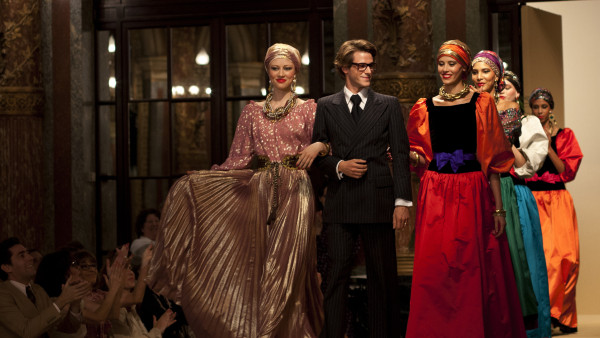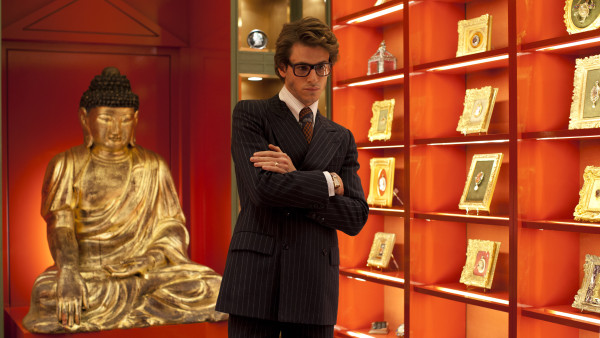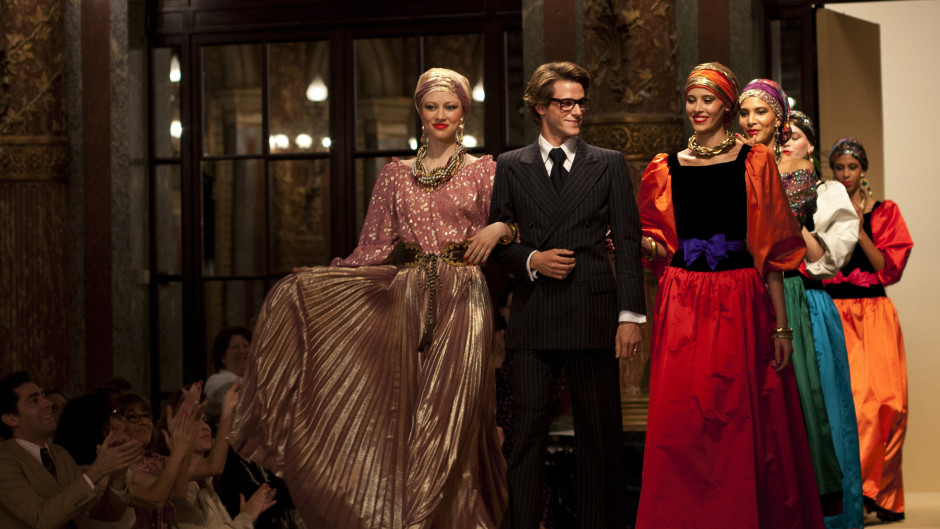Midway through Saint Laurent, Bertrand Bonello’s buoyant biopic, one of Yves Saint Laurent’s world-weary assistants says, “Fashion passes like a train.” It’s a relevant observation. Like the advertising business, fashion is fleeting, susceptible to rapidly changing tastes.
The famous French couturier Saint Laurent (1936-2008) was acutely aware of this occupational hazard, but never allowed it to degenerate into a problem. From the moment he became Christian Dior’s chief designer at the age of 21, to the time he opened his own business, he was always ahead of the curve. An iconic figures in haute couture, he shaped the public’s view of fashion and adapted to its mercurial whims and permutations.

In Saint Laurent, which opens in Toronto on May 22, he’s portrayed as a complex figure — original and daring, yet jaded and insecure. “I have no life,” he claims in a somber aside. “I feel old.”
Saint Laurent (Gaspard Ulliel), however, can rest assured that his level-headed partner, Pierre Berge (Jeremie Renier), is guiding the ship in the right direction. Berge, the brains behind their fabulously successful enterprise, branches into ready-to-wear clothes, perfume and sunglasses. And he keeps Saint Laurent’s wild side in check.
Usually dressed in a spotless white laboratory coat, Saint Laurent is the empire’s creative genius. Looking somewhat distracted, he sits at his desk, sharpened pencil in hand, committing his latest ideas to a sketch pad with a few deft strokes. Nearby, in a cluttered work room, seamstresses in white smocks construct mockups of the great man’s latest designs.
The film, which is bold and alluring, unfolds in Paris and Marrakech during a 40-year period beginning in 1967, when Europe was seething with youthful rebellion and Vietnam was embroiled in war. The juxtaposition between Saint Laurent’s insulated studio and the chaos around him is illustrated by means of a split-screen technique.
It’s clear from virtually the outset that Saint Laurent, a homosexual, is socially unconventional and dissolute. On a dark street in Paris’ nether region, he picks up Jacques (Louis Garrel)a rakish socialite who becomes one of his lovers. And in a disco bar, with loud music blaring and lights pulsating, he meets Betty (Aymeline Vadade), a willowy blonde model whom he hires as his assistant and muse.
Bonello glosses over Saint Laurent’s early years in Oran, Algeria, where he was born, but as the film moves on, he inserts a couple of quickly dissolving scenes pertaining to it.
Saint Laurent, played by Ulliel with panache, is depicted as a heavy drug user, drinker and smoker whose decadent lifestyle threatens his success and whose composure is at odds with his vulnerability.

In one expressive scene, as he and Jacques kiss on a leather couch, Saint Laurent’s beloved dog, Moujik, devours pills scattered on the floor. The dog passes out and dies of an overdose. Saint Laurent doesn’t outwardly mourn Moujik’s demise, but he dutifully lays a bouquet of white flowers at the base of his headstone.
A film like this would be incomplete without a few head-turning fashion shows, and in this respect, Bonello is hardly remiss. Amid a swirl of cotton, silk, chiffon and velvet, a succession of gorgeous yet impassive models flounce up a runway to the ethereal strains of Maria Callas. They exude an aura of elegance and beauty, the constants and drivers in Saint Laurent’s storied life.
